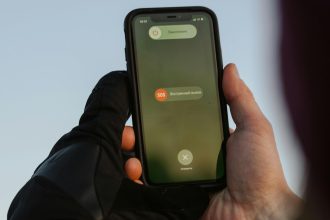How I Spent Years Making $0 by Building Products Nobody Wanted
For years, I pursued an elusive dream: creating a product that people would actually pay for. I fell into the trap of believing that a “brilliant idea” alone would guarantee success. I thought that hard work would be the key. I assumed that if I packed my products with features, users would come flocking. Unfortunately, I was wrong.
The cycle was painfully familiar:
- Get excited about a new idea.
- Invest months in development.
- Launch and hear nothing but crickets.
- Feel disheartened.
- Rinse and repeat.
Time after time, I convinced myself that “this next project will be the breakthrough”, while neglecting to validate whether anyone actually wanted what I was creating or if they’d be willing to pay for it.
After numerous setbacks, I finally managed to develop a product that people were eager to purchase. Here’s how I secured my first 100 customers.
What Worked and What Didn’t
What Worked:
- Connecting with people who were already searching for a solution.
- Rather than sending cold DMs, I looked for posts like “Anyone know a tool that…” or “Frustrated with [competitor]” and offered genuine assistance.
- Leading with value instead of a sales pitch. My first message focused on addressing their queries comprehensively. Only after providing useful information did I mention, “I actually built a tool that could help…”
What Didn’t Work:
- Generic cold outreach.
- Nobody showed interest in my “revolutionary AI platform” messages.
- Waiting for SEO results. With a new domain and competitive keywords, that process takes ages.
- Trying to cater to everyone. My early versions were overloaded with unnecessary features.
The “Ready-to-Buy” Framework I Created
The breakthrough insight: Concentrate exclusively on individuals who are:
- Actively seeking a solution.
- Dissatisfied with current options.
- Asking for recommendations.
These leads convert at 5-10 times the rate of cold outreach because they’re already in a buying mindset.
Key Takeaways for Aspiring Founders
- Focus on addressing a specific pain point.
- Master one thing exceptionally well.
- Utilize familiar tools. I developed using technologies I was comfortable with, allowing me to ship an MVP in just days rather than months.
- Manual outreach can be more scalable than you might think.
- Start charging right away. I launched with a paid plan from day one—no “we’ll figure out monetization later” mindset.
I hope this can be of help to someone out there. If you have any questions, feel free to reach out—I’m more than happy to assist!










3 Comments
Thank you for sharing your journey and insights! It’s incredibly valuable to hear about the realities of product development, especially the importance of validating an idea before diving in headfirst.
Your experience resonates with so many aspiring founders who believe that a great idea alone is the key to success. The “Ready-to-Buy” Framework you developed is a fantastic takeaway; focusing on those already seeking solutions can save a lot of time and heartache. It’s also refreshing to see a reminder that building a product doesn’t have to be an all-consuming process—starting with a simple MVP and honing it based on feedback can lead to more sustainable growth.
I appreciate your emphasis on leading with value in outreach. That approach not only builds trust but also helps create genuine connections with potential customers.
Do you have any tips on how to better identify those active prospects or places where you found the most success in your outreach? Thanks again for sharing!
Thank you for sharing your journey and insights! It’s refreshing to see such honesty about the challenges of entrepreneurship. Your experience highlights a common pitfall—assuming that a great idea and hard work alone will lead to success.
One thing that particularly resonates is your emphasis on validation before development. The “Ready-to-Buy” framework you created is a powerful reminder that understanding your target audience and their pain points is essential. It’s not only about building a product, but ensuring there’s a market that genuinely needs it.
I’d also like to add the importance of continuous feedback loops post-launch. Engaging your initial customers can provide invaluable insights as they use your product. Setting up a feedback mechanism can help you iterate quickly and align your features with users’ needs, keeping them engaged and satisfied.
Lastly, the approach of leading with value rather than a direct sales pitch is crucial in today’s market where consumers are often inundated with offers. Building relationships through genuine help can create trust—a vital component for long-term business success.
Keep up the great work, and I look forward to hearing about your next ventures!
Thank you for sharing such a candid and insightful journey. Your emphasis on validating demand and focusing on active seekers really resonates—it’s a crucial reminder that success often hinges on reaching the right audience rather than casting a wide net. I also appreciate your point about starting with a paid plan from day one; this not only validates value but also aligns your efforts with real revenue goals early on.
One additional takeaway is the power of iterative validation—perhaps leveraging MVPs or rapid prototypes to gather feedback before investing heavily. Also, building relationships through genuine engagement rather than cold outreach creates trust, which is often the catalyst for conversions.
Your experience underscores the importance of prioritizing user pain points and maintaining a lean, focused approach. Thanks for inspiring entrepreneurs to shift from ‘build and hope’ to ‘build, validate, and serve’!